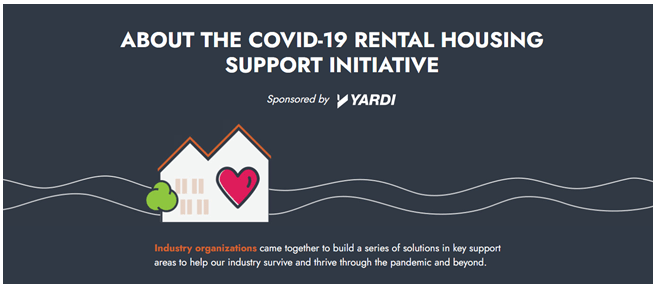Amenities like fitness centers, laundry rooms and pet services are standard at many residential and commercial properties. So ordinary are they that property managers are striving to deliver increasingly elaborate offerings to attract residents and tenants. Real estate investment information source Millionacres.com says, “If you want your units to fill up quickly and stay filled, you’ll want to offer the best apartment amenities possible for your tenants.” That doesn’t just mean rooftop pools, private restaurants, pet spas and indoor skate parks for high-end space. “Desirable amenities can be offered at smaller properties, too.” Dog grooming services can be a plus for pet owners. As for commercial space, San Diego commercial real estate investment firm Locale notes, “Spare corner weight rooms have transformed into fully equipped, professionally staffed fitness centers; the corner coffee cart has evolved into a chic, onsite café complete with baristas serving specialty coffee; and outdoor seating areas have expanded to include meditation gardens, dog runs, and sports fields.” Residential: Exceeding the expected As Millionacres and other property management industry observers suggest, owners and managers might want to consider stepping up their game for residents who expect: More than just enough space for parking and bikes. Service enhancement options include assigned off-street parking with additional spots for guests and bike storage, and electric vehicle charging-equipped garage parking.A larger welcome mat for Rover. Consider expanding the pet-friendly policy with a dog park or grooming\spa services.Energy efficiency. Many tenants seeking sustainability and cost savings opportunities expect upgrades like compact fluorescent lamps instead of incandescent ones, solar panels or fuel cells rather than grid-based fossil fuel power with, LEED certifications, and ENERGY STAR® certifications for refrigerators and other appliances that meet stringent energy-efficiency standards.Better building heating and cooling systems, featuring central air and heating systems...
COVID-19 Rental Housing Support Initiative
Yardi Sponsors Industry Initiative
Supporting the rental housing sector through the pandemic and beyond is a priority for the industry’s preeminent technology provider. Yardi is the primary sponsor of the COVID-19 Rental Housing Support Initiative. The project is a collaboration of The Institute of Real Estate Management (IREM), National Apartment Association (NAA), National Multifamily Housing Council (NMHC) and National Association of Residential Property Managers (NARPM). The project continues to release new resources in the areas of mental health, legislative support, liability information and media. A summary of those now available (as of March 25) follows: Mental health resources: Mental health resources can help housing providers and renters alike. Find videos and other content on coping with isolation, cultivating resiliency, managing anxiety and handling financial stress. Legislative support: Accurate data and information is important for decision-makers as they facilitate ongoing emergency assistance programs. These resources help leaders understand the size and impact of the rental housing sector. Legislative educational resources are now available. Liability information: Property owners and operators must keep up with the latest laws and federal guidelines as they pertain to housing. The project liability resources help ensure compliance with changing legislation. Media support: The engaging “Rental Housing Industry Myth Quiz” is a way to educate the public and provide details about the pandemic impact for rental housing industry owners and operators. In mid-2020, Yardi committed $1 million to supporting COVID-19 Rental Housing Support and the programs developed by this initiative. “With nearly 40 million Americans living in apartments, the rental housing industry plays a critical role in housing them safely and securely. We are delighted that the four major associations who serve the rental housing industry – NAA, NMHC, IREM, NARPM – will share knowledge, develop industry benchmarks, research new ways of operating and provide forward-thinking solutions for the benefit of residents, owners and the rental housing industry,” said Anant Yardi, president and founder of Yardi. “Yardi is committed to supporting the multifamily industry for the duration of the pandemic,” said Esther Bonardi, vice president of marketing at Yardi. “Our company mission is dedicated to supporting our clients and communities, and in this case the entire rental housing realm is part of that community.” Explore all of the support resources online at covidinitiative.rentalhousingindustry.org....
Safer Screening
Online ID Verification
For its speed and efficiency, online leasing might be one of the best things that’s ever happened to property managers and renters. And with the current impact of COVID-19 on multifamily operators and renters alike, mobile tools and services that enable social distancing for necessary transactions are more valuable than ever. Renting sight unseen Prior to the pandemic, the 2020 NMHC/Kingsley Associates Apartment Resident Preferences Report found that 14% of respondents would rent without seeing an apartment in person. There’s no doubt that the number of unvisited rentals will explode with social distancing rules in place. But that comes with increased risk. In order for online leasing to support your bottom line by filling your units with quality residents, you need to be sure your applicants are who they claim to be. New technology can help you safely confirm the identity of your applicants online in just a matter of seconds. ID Verify is a smart software solution that quickly authenticates real world personal ID documents such as driver’s licenses and passports and it’s now accessible within the RentCafe leasing workflow. Protection that converts The right online services can help you sign leases with quality renters without meeting them in person. Customer journey statistics show that while engaging a customer in a mobile transaction, if you require them to leave the channel to provide documentation, such as a personal ID for a rental application, the abandonment rate can be as high as 90%. Allowing applicants to provide ID documents online as part of the leasing process can make a big difference in your conversion rates. ID Verify harnesses computer vision and artificial intelligence technologies to automatically classify, extract and authenticate ID documents within seconds. Automated verifications For optimal processing, guided document capture helps applicants...
9 Easy Tips
Reduce Pet Make Ready Costs
Pet-friendly policies can help a community thrive. Pet messes and odors, however, can increase your “make ready” costs and cause resident complaints. We’ve identified a few pet-friendly tips that will help residents enjoy their furry roommates while keeping your costs low and renter satisfaction high. Poor pet maintenance will cost you Tenant turnover costs vary due to several factors. Many sources place the costs between $1,000 to $5,000. Apartments that housed pets are often on the higher end of the spectrum. Such “make ready” costs can unnecessarily increase your operating costs. Replacing carpets and deep cleaning solid flooring is to be expected. Replacing chewed baseboards and door molding, fumigating odors, and replacing cat-clawed screen doors, however, can cost more than the security deposit covers. Then there are is pets’ impact on resident satisfaction. The dog upstairs that constantly barks or the odors wafting through the ventilation system may make neighboring residents reconsider their lease renewal. You can empower residents with tips to keep their pets on their best behavior. If they adapt just one new skill, it can save you hundreds of dollars or more. Tips to pass on to residents Tone is everything. Use your neighborhood portal and email list to distribute the tips below to your residents. Keep the tone lighthearted and informal. But most importantly, let residents know how these tips will benefits them. Got indoor odors? Pick up after your pets outside and encourage your neighbor to do the same. Spending time outdoors with your pet is great for the both of you! But people who do not pick up after their pets outside are part of the reason why apartments don’t smell fresh inside. Think of this: your dog and your neighbor’s dog relieve themselves in the grass. Neither of...
Breed Restrictions
SEO + SEM for flexible pet policies
Did you know that “apartments with no breed restrictions” is a popular Google search query in most metropolitan areas? The trend extends to many secondary markets as well. Properties without breed restrictions can capitalize on a flexible pet policy—if you use strategic SEO. When high-risk isn’t a mandatory “no” Insurance companies’ classification of “high-risk” pets is the result of actuarial and claims data. Over time, the insurance companies analyze data regarding pet-related claims. Breeds that appear in claims the most (thus costing the insurance company the most) will appear on the high-risk list. Commonly listed breeds include pit bulls, Doberman pinschers, rottweilers, German shepherds, mastiffs, Great Danes, Siberian huskies, Alaskan malamutes, and wolf-hybrids. These breeds are large dogs (above 45lbs) which is why some apartment communities restrict by size rather than listing specific breeds. The congregated lists of insurance companies may impact local and state legislation. More than 700 U.S. cities have authorized breed-specific laws. As a property owner, you do not have the flexibility to opt out government-mandated breed restrictions. However, it is often optional for you to accept and enforce your insurers recommend breed restrictions. If you opt to waive the restriction, your property is among a highly sought-after group of apartments in major metropolitan areas. The best of both worlds: accepting all breeds with additional insurance protection If you are in a renters’ market with tough competition, a flexible pet policy could work in your favor. When coupled with additional insurance on high-risk pets, you can address insurance concerns without turning away quality renters. In addition to required renters insurance, consider a mandatory liability policy that covers large breed owners with at least $300,000. The policy may also list the landlord as an additional insured member. Since few communities accept large...
Avoiding Coliving Pitfalls
Today's rental trends
As a junior, I lived in the Creative Writing Theme House at Agnes Scott College. A beautiful five-bedroom house just outside of campus gave students an opportunity to live and work with like-minded peers. I loved the experience: group meals and activities, weekly poetry readings, and the ability to workshop my short stories with people who “get it.” Too bad I wasn’t a business major. Then I would have seen the coliving trend coming and profited from it. But the experience did successfully foreshadow the pitfalls of coliving. Multifamily property managers, take note. Coliving is trending and is likely here to stay. By avoiding the pitfalls of your competitors, you can optimize your profits for years to come. What is coliving? Coliving is all the rage in multifamily housing. It combines the best aspects of Airbnb’s short-term rentals and city experiences. Coliving quarters include furnished private studios and multi-person shared flats. Depending on the level of luxury, there are private or shared bathrooms. Common areas usually include the kitchen, laundry room, and exterior spaces. Flexible rents make coliving spaces different than dorms or apartments. Yet the key differentiator in the industry is the themed living. Coliving communities unite like-minded renters. Participants are often professionals in a similar field, people interested in exploring a neighborhood or city, or less tactile themes like inclusion. Yardi client Cushman & Wakefiled recently released a detailed national report on coliving. There are a few common features that coliving properties and their residents share: Property managers within major metropolitan areas are seeing the highest demand for coliving. Such locations offer low rents near popular job hubs. The average coliving resident is in their 30s. The average median income of coliving residents is about $60,000 per year. Additionally, there are a few common characteristics among coliving residents: Digital nomads make up a notable portion of coliving residents. Remote workers want social interaction without the confines of an office. Coliving combines the best of apartment living with coworking space. People who have recently transferred to a new city see coliving as a way to make friends and familiarize themselves with the city before establishing roots. Transient employees often turn to coliving to make friends and get to know the city without committing to long-term, pricy leases. Missing the mark: finding the balance between privacy and intimacy Nationwide, surprisingly few people are interested in coliving, reports the National Multifamily Housing Council & Kingsley Associates Resident Preference Survey. Though there is a lot of hype and investment in coliving start-ups, apartment residents aren’t sold on the concept. About 69% of survey respondents said they “definitely would not be interested” in coliving. Why not? Finding the balance between privacy and intimacy is where several coliving developers have missed the mark. Take my stint in a coliving community as an example. We nine housemates valued our time together. We enjoyed cooking together and attending literary events around town. We got to know each other quite well, including dietary preferences and quirks. Unfortunately, there were frequent meetings where we nearly went Jerry Springer on each other over the messiness of common areas, noise control, and guest management. Living with strangers will never appeal to everyone. But for those who have considered the option, privacy and intimacy can make or break a coliving community. Shared bedrooms and bathrooms make it more challenging to control messes and coordinate schedules. There is a greater demand for floorplans with private bathrooms and bedrooms. Privacy resurfaces as a general concern. Sound proofing and other privacy measures in personal spaces increase resident satisfaction. Though prospects value privacy, they also value intimacy. Ideal living arrangements are between four to ten residents. Larger housing groups were perceived as less personable and less desirable. A steady flow of unmonitored guests also interrupts the perception of intimacy. A community can quickly go from cohesive coliving to frat house nightmare without proper controls in...
Residents Speak
Reputation Management
A stellar online marketing strategy can be thwarted by negative reviews. The 2020 National Multifamily Housing Council & Kingsley Associates Apartment Resident Preferences Survey reports that 33% of renters highly value online reviews when deciding on an apartment. Are your reviews working for you or against you? Take the four steps below to ensure your online reviews are an asset. Who is paying attention to your online reviews? Renters of all ages use the internet for product research. Renters ages 25-34 years value online reviews the most. Nearly 40% of Millennial renters “highly value” the content of online reviews. While all your residents appreciate good customer service, younger renters are more likely to take their opinions to the web. They’re also more likely to seek out the opinions of others before deciding on a property. While some of the young renters are residents, most are prospects. Curiously, they’re searching out negative reviews. Studies show that since there are more positive reviews than negative ones, negative reviews are given greater value. Low-star reviews are scarce, so they’re held in higher esteem, like rare gems or box seats at a sporting event. That is why dissatisfied residents need extra care. Per the White House Office of Consumer Affairs, dissatisfied customers typically tell nine to 15 other people about their experience in person. The availability of online reviews can quickly escalate their reach. The negative review of a dissatisfied resident will reach hundreds of prospects each day, prospects who are already looking for negative reviews to narrow their apartment options. The four tips below can help you avoid and mitigate negative online reviews while boosting your positive online presence. Resolve issues online before reviews are posted online When renters have a concern, they are going to get online....
Attracting Renters
In New York City
The Bronx, Brooklyn, Manhattan, Queens, and Staten Island: together, they make up the most vibrant city in the world. But New York needs no advertising. Any New Yorker will tell you that each of the five boroughs has its own unique charm. So, what do renters expect when looking for an apartment in NYC? We compiled a short list of tips to attract potential renters in the Big Apple. Keep it clean Looking for an apartment that’s in move-in ready condition is a priority for most people looking to rent in New York City. As such, hiring regular, professional cleaners for the entire apartment building can do wonders to attract new renters. It also shows those who already live there that the building management looks out for their well-being. Make sure any maintenance issues are handled before a showing—no matter how small. Keep it safe Whether it’s Brooklyn apartments for rent or apartments in Queens, feeling safe in the city that never sleeps is paramount for renters. This is why ensuring the safety of the premises is crucial. No matter whether your renters are in it for the long-term, maintenance support is key. Moreover, regular check-ups and upgrades to security systems and locks are essential. Keep it close Proximity to work, school, or anything of importance to the renter is an amenity most NYC renters would be willing to pay big bucks for. Once a prospect shows interest in your rental, it’s most likely because they are happy with the location or are willing to compromise. In NYC, proximity to public transit is one of the top criteria renters use when searching for apartments. Advertise convenient transportation options near the property’s location, but always be honest. Staten Island might be just a ferry ride...
Pet-Friendliest Cities...
Attract Renters and their Pets
Some days, you make look at your property lawn and wonder if it’s worth it to permit pets. Operating a pet-friendly community comes with its challenges. Your pet policy and unique services, however, are profitable differentiators when you’re amongst the nation’s most fur-friendly cities. RentCafe.com recently released its list of the 50 Best Cities for Renting with Pets. To create the list, the ILS analyzed pet-friendly rental listings across the nation. Analysts then factored in monthly pet rent, deposits, additional charges and amenities to determine the most pet-friendly cities for renters. When your city appears on the list, there are distinct benefits that can work in your favor. There are also challenges that, when overcome, give you and your properties even greater opportunities to shine. The Benefits While this list was published with renters in mind, property managers and owners can benefit from it as well. Pet-friendly apartments are in high demand: almost 70 percent of U.S. households own a pet, reports the 2017-2018 National Pet Owners Survey. Of those households, the American Veterinary Association estimates that 50 percent of renters have pets. Of the renters without pets, 35 percent said that they would have pets if allowed by landlords. By offering pet-friendly rentals, you can reach prospects with pets as well as those who want to have pets. That’s more than 80 percent of renters! You then have a healthy pool from which you can identify quality, low-risk renters with resident screening. The Challenges (+ the Work Arounds) If your city is on the list, it’s an indicator that you’ve got a lot of competition. You are in a city where plenty of multifamily communities accept pets. To stand out, you’ve got to outshine the competition. Draw in prospects with your carefully curated amenities. These pet-friendly, value-add services...
Streamline Leasing
3 Smart Solutions
Are you looking for a more efficient way to convert quality prospects into satisfied residents? Streamline the leasing process through integration and automation. Software Integration Switching between independent leasing, management, and accounting programs ensures that your data will be incomplete or pocked with errors. At best, there is a lot of redundant data entry. Each distraction siphons time away from your staff’s resident care efforts. Skip the drama with a web-based, fully integrated end-to-end platform. Select property management software that can seamlessly manage marketing, leasing, accounting, utility and maintenance data under one roof. Learn how Cagan Management Group uses flexible, integrated software to simplify business operations. Automated Marketing Wouldn’t it be great if you could tailor your marketing message to meet prospects’ needs? You can. What’s better is that you can do so through automation, which means that you don’t need staff engagement 24/7. Automated nudge marketing, for example, delivers a targeted message to prospects based on their online behavior. You can encourage them to take the next step in the process, such as setting an appointment or completing an application. This can be done while your leasing office is closed. ILS automation is another huge time saver that also helps you fill vacancies. Sourced from up-to-date information in your property management software, ILS automation updates your listings across multiple online rental sites. It makes sure pricing and vacancies are accurate without manual data entry at each site. Discover more marketing automation tools that can save you time and money. Tools that Empower Residents Are you still making residents trudge down to the leasing office to pay the rent or file a maintenance request? You’re wasting their time and as well as your staff’s. Skip data entry, check scanning and bank runs. Resident portals...
Market Trends
Make Room for 3.6 Million Families
Have you found it easier to move those three-bedroom units than before? For decades, larger units were tougher to rent. That narrative has changed in the recent years. New data projects the trend is likely to continue—and 3.6 million families may enter the rental market. Single-family rentals have experienced an ascent in popularity. The demand has encouraged the construction of 3.6 million units in the past decade. Yardi Matrix, an apartment intelligence provider, reports that 52 percent of the apartments built between 2006 and 2016 have at least two bedrooms. Of those, 41 percent are 2-bedroom units, 9 percent have three bedrooms and 2 percent have at least 4 bedrooms. Fewer families with young children can buy a home. As a result, families are making their mark on multifamily development by driving the demand for larger units and plenty of them. The Backstory The housing crisis was more than a decade ago, but the aftermath lingers. Greater restrictions on lending led to higher home prices and a grinding halt in new home construction. At the depth of the recession, home prices dropped–right along with job security–leaving fewer opportunities for families to confidently invest in a house. With fewer entry-level homes to meet their needs, young couples and families turned their eyes towards renting. Families with young children who own a home dropped by 3.6 million from 2006-2016 (the most recent U.S. Census). As the economy recovered, home prices surged disproportionately to salaries and rent rates. National real estate brokerage Redfin suggests that the median price of a single-family home increased by 35 percent in the past 5 years. That’s 75 percent faster than rent increases which rose by only 20 percent, reports Yardi Matrix. For context, when adjusted for inflation, workers’ wages only grew...
Security Deposit Alternatives
Three Reasons They Attract Renters
Are your security deposit requirements costing you good renters? Sometimes, desirable renters are short on cash. But, do you really want to risk losing a good and potentially long-term resident because they can’t pay a high security deposit before they move in? Imagine you show a unit to a young professional who is relocating to your area. They have a good new job and great credit along with excellent references. They’re the kind of reliable resident you’re looking for — and they’re ready to sign a lease. But, they don’t have enough cash to pay the security deposit you require. Do you have to let them walk away? As it turns out, you don’t. You can let good renters move in for less money up front by allowing them to post surety bonds in place of a traditional cash deposit — and still ensure your properties are protected. Read on to learn more. What is a Surety Bond? Surety bonds are a form of insurance that constitute a contractual promise to meet security deposit requirements while taking less money up front from new renters. Renters simply pay a one-time, non-refundable bond premium that is typically less than 20% of a traditional security deposit, and the surety bond provider acts as a third-party guarantor up to the limits of the bond amount. While relatively rare before the mortgage crisis of 2008-2010 when many families experienced job losses and home foreclosures and needed help getting into rentals, surety bonds have become more popular with landlords in recent years to help renters deal with move-in costs. What are the Benefits? While renters are happy to keep more hard-earned money in their pockets and not worry about getting security deposits refunded, property staff are relieved of managing escrow accounts and processing deposit refunds — which also means saving banking fees and administrative costs. Many property managers also find that offering a deposit alternative gives them an advantage in competitive rental markets. Three Great Reasons to Accept Surety Bonds Gain a competitive advantage and fill vacancies faster: Without the barrier of a big security deposit, surety bonds can help you rent available units faster. Plus, accepting surety bonds as a deposit alternative for qualified renters could help you market your properties, especially in competitive areas. Take the burden off management and mitigate risk: With surety bonds, property owners and managers are removed from the collection process and, in most cases, from litigation should disputes arise over the return of security deposits. Reduce work for property staff and lower administrative costs: Opening separate trustee or escrow accounts with your bank for new tenants can be a hassle and takes hours of your staff’s time to process, in addition to monthly bank fees that eat away at your deposits over time. Surety bonds don’t require any of that, nor do property staff need to track and pay out interest on security deposits. Ready to give your renters an affordable move-in option that also helps your busy staff and protects your bottom line? Download a free brochure to get...
Resident Retention
7 Tips to Keep Renters
Resident retention plays a major role in easy lease renewals and favorable reviews. Maintaining existing leases also cuts costs: no turning units, new marketing campaigns or strategies to covert new prospects. Doesn’t that sound awesome? The following seven strategies for resident retention can help you make the most of existing relationships. Begin at move-in. A positive move-in experience is a key factor in renter retention. Welcome packages are an easy way to help residents feel at home. Depending on your brand, you may choose to spoil your residents with wine, decadent treats, and certificates to fine local restaurants. Perhaps you go for thoughtful and practical like light bulbs, toilet paper, and instant coffee. Either way, the gestures leave a positive impression with residents. Be proactive! A survey by J Turner research reveals that maintenance issues top residents’ lists of complaints. Staying on top of maintenance requests promotes resident satisfaction. Preventative measures, such as regular spring cleaning and winter maintenance, also keep dissatisfaction at a minimum. Respond quickly and professionally to negative feedback. Negative reviews and feedback are inevitable. Your staff must respond quickly and professionally to resident feedback to keep bad situations from getting worst. With the right perspective, even negative feedback can be transformed into an opportunity to shine! Encourage resident engagement with the property and staff. Create opportunities for residents to have positive interactions with staff members and the property itself. Is your property’s demonstration kitchen collecting dust? Is your community garden suffocating under weeds? Highlight the site’s marketable features through events and activities. Remind residents why they moved in! Don’t forget to leverage staff creativity. Encourage your social media person to offer smartphone photography classes. Got a craft beer snob working in your office? Let them coordinate a bar hop for...
Cheaper to Buy?
17 Trend-Busting Cities
In several metropolitan statistical areas (MSAs), owning a home may cost less than renting. There are several factors that determine home affordability when compared to renting, so let’s dive right in. Out of the 33 largest MSAs, 17 have homeownership options that are more affordable than renting. Homebuyers’ savings could exceed 3 percent of their incomes in nine of the 17 cities. Buying is more affordable than renting when homebuyers are able to: Put 3.5 percent down on the property, often with help of down payment assistance programs. Meet eligibility requirements for those down payment assistance programs Qualify for a loan for a median-priced (or less expensive) home Cover mortgage insurance costs, which vary by loan Down payment assistance programs are a huge factor in home affordability. A report by Urban Wire helps consumers identify available programs by state. There are 2,144 down payment assistance programs from which borrowers can choose. Top 5 Locations Below are the top 5 cities where buying a home offers greater savings than renting. Miami In this multicultural city of sun and surf, the buyer of a median-priced home could save about 11 percent of their income when compared to renting. This is even when the expense of Miami real estate is factored in: Miami is the 11th most expensive city amongst the MSAs in terms of mortgage affordability. The median mortgage costs 32 percent of buyers’ median income, which is 2 percent above the recommended affordability average. While that mortgage-to-income ratio is high, it’s not as high as renting. Rent can cost a whopping 42 percent of a household’s median income. Detroit As the Motor City continues to redefine itself, it entices residents with affordable housing stock. With a rent gap of -7.11, rent will cost 21.30 percent of...
Insurance Updates
ResidentShield Protection Plan
Required renters insurance is widely considered a best practice for multifamily managers to reduce property risk and protect asset value. ResidentShield Protection Plan works seamlessly with Yardi Voyager, with easy online signup for residents and automated program monitoring for property managers. It also offers coverage options to residents for their personal possessions. Read on for the latest enhancements to this “peace of mind” insurance program. More options ResidentShield’s forced-placed Master Policy program now invoices management companies by property for easier payment options. Pet-friendly apartments are highly coveted by all the animal loving renters out there, and ResidentShield has you covered. In addition to having several pet-friendly endorsements to offer, a notification is sent to a property if a resident has a pet but has not purchased pet damage coverage. Should pet damage occur, the Pet Notification feature can track which residents purchase a pet damage endorsement, which gives your property up to $500 to file after the applicable security and pet deposit have been exhausted. Better compliance ResidentShield policy holders now receive text notifications of changes to their policy — making it easier to stay informed and compliant. Also, when a policy is cancelled, the policy holder will receive an updated email from ResidentShield, which frees staff to focus on leasing and other important tasks (instead of tracking policies and sending letters). The lease violation fee program has also been modified to further motivate residents to remain compliant — and when they are not, they will be automatically charged a fee. Coming soon To optimize claims management, claims information will be stored in Voyager. This will make it easier for staff to enter claims information and track the progress of every claim. (ResidentShield claims are automatically updated every night.) Another feature available soon is...
Simplified Screening
ScreeningWorks Pro Delivers
Screening applicants manually and using paper reports that require further research slows your staff down — and can cost you your best prospects and valuable leases. Here’s some good news: replacing a paper-based process for qualifying applicants and converting them to residents is easier than you might think. Clients already know that approving quality residents as part of their automated leasing workflow with ScreeningWorks Pro saves time and money. The system includes advanced functionality to help clients not only easily select low risk residents who improve their bottom line, but also get more detailed analytics about individual applicants, local area renters and overall property performance that aids in decision making for the entire organization. Scoring for leasing wins Landmark Realty Controller Larry Busgeon said that one of his favorite features of ScreeningWorks Pro is the ability to select unique screening criteria for every property type in Landmark’s nationwide portfolio. “Our Albuquerque properties are lower end so we’re not worried so much about credit score as we are history of tenancy, For San Francisco, of course we want (strong) credit scores because the rents are much higher there, and we want to see some history on that credit score,” Busgeon explained. Landmark also has a mixed portfolio of apartments in Kansas City, Mo., a market that presents its own set of challenges. Using the most reliable data available, ScreeningWorks Pro provides automated recommendations that minimize risk. In San Francisco, Landmark uses it to screen long term residents, and has also expanded use to short term residents who stay for just 30 days. In Kansas City, Landmark screens both HUD and market rate prospects. “ScreeningWorks Pro is an excellent choice — you can fine-tune criteria by market and offer self-service convenience to applicants, with mobile access...
UK Perspective
Better build-to-rent marketing
The UK’s build-to-rent sector is booming. In less than a decade, the sector has grown by around 60% and is now worth some £1.5trn. This comes as no surprise. We all have, at some point in our lives, been looking for a place to live, whether it is a house or a flat, and build-to-rent is an alleviation in the midst of the UK’s housing crisis. The internet has made home searching extremely easy and the advent of the so-called ‘generation rent’ has seen millions of people turning to renting as their model of choice. The old days of pen and paper, endless phone calls and long rides in your car to view properties are long gone and the search is now almost entirely conducted on the web. Just as shopping no longer means showing up in a store, home searching has become essentially digital. But even so, the process might be extremely slow. Imagine you are on your lunch break, looking for an apartment on your laptop or smartphone. You are clicking on dozens of different sites, scrolling through pages and pages of dubious websites. Maybe the information provided on the website is incomplete. It lacks floorplans and energy ratings. There are no reviews or pictures. How can you trust this website instead of another one? Is the apartment going to be as good as it is presented? Are you just going to waste your time? Hunting for an apartment can be a very frustrating experience indeed. Turning to the other side, and looking at the situation from a landlord’s perspective, it is increasingly hard to catch a home-hunter’s attention. Due to the same chaotic web scenario, this challenge is now tougher than ever. How can a landlord make a prospective resident discover...
Best Practices
For Lease Non-Renewals
Many states do not require landlords to specify a reason for lease non-renewals. It is in your best interest, however, to have a well-documented reason for not renewing a resident’s lease. Here’s why. Keep Fair Housing Fair Fair Housing laws forbid non-renewals based upon discrimination or retaliation. You likely know this from your new-hire orientation, but here is a quick review of why it matters now: Discrimination: You cannot treat residents differently based upon their race, ethnicity, family status, ability level, sexual orientation, or any other protect class group. Your resident’s rambunctious kids are not a sound reason for lease non-renewal. Retaliation: You cannot treat residents differently because the residents assert their rights in any capacity. Residents always retain their legal rights. For example, if a resident issues a complaint about your property to a government agency and, subsequently, you opt not to renew the lease, you may face legal action. Thorough documentation prior to a lease non-renewal provides clarity for both landlords and residents. You can minimize claims of discrimination or retaliation when there are time- and date-verified correspondences of your concerns. Documentation Best Practices If peer complaints are your first indicator that a resident is a problem, document the complaints electronically. For example, if a resident calls with a noise complaint about a neighbor, write an email identifying the details of the complaint and send it to yourself. It’s beneficial to send a copy to the resident as well. (Your message does not need to contain the name of the person who issued the complaint.) Primarily, the resident may be unaware of the issue. Your message may stop the problem and prevent the costly turnover. The email also lets the resident know that you are tracking their non-conformity to the lease or...
Renters Speak Out
Canadian Tenant Survey
If you’re currently a renter or have ever been one, you’ve probably wondered whether or not your landlord considers your needs for a happier home. A recent survey of thousands of Canadian renters sent a clear message to property managers everywhere: from soundproof walls to high speed internet and online services, renters are expecting more from their apartment living experience. And perhaps not surprisingly, technology tops the list. Sponsored by Yardi, results of this year’s Tenants Preference Survey, the only survey of its kind for the Canadian market, were presented at the Canadian Apartment Investment Conference (CAIC) on September 6, 2017. The CAIC brings together property owners, managers, investors and developers to provide valuable insights into the residential real estate market including how to increase net values. This year, attendees were eager to hear about what renters really want and how to keep them happy. Birth of the Project According to Sarah Segal, director at Informa, the survey was inspired five years ago by a real estate roundtable discussion that raised questions about what renters wanted. Informa delivers over 150 trade and consumer exhibitions annually across the globe including the Canadian Apartment Investment Conference, and engages industry leaders to understand key trends and concerns impacting property owners and managers. With more digital tools to empower its research in 2016, Informa partnered with Rentlogic and worked with founder Yale Fox and Amy Erixon from Avison Young to conduct a small survey of 2,000 renters. Segal said the survey produced some interesting findings, but Informa wanted wider distribution and more targeted questions for the next survey. To accomplish that, the company sought industry support including sponsors and the participation of property managers. Segal commented, “Yardi was immediately onboard with helping us produce an in-depth renter survey and...
Resident Screening in Canada
3 Ways to Win
Screening prospective residents is a crucial step in creating a safe and secure community and minimizing risk to your business. Background checks and credit reports help you reduce loss from collections, evictions and legal action. No matter which decision criteria you use to screen your residents, there’s a way you could save even more time while keeping your properties and profits secure. Using a resident screening solution that integrates with your property management platform allows you to make better rental decisions more quickly. In addition to being the smart choice in today’s fast-paced rental industry, integrated screening provides you with comprehensive reporting and analytics that let you know if your properties are on the right track. Save Time & Reduce Errors Increase efficiency with just one system and one login that lets you get more done during the leasing process. Integrated screening software automatically populates information from the online leasing portal to the screening application, removing the need to enter applicant information on multiple forms and the risk of delays caused by inaccurate data. Did you know that decision criteria can be tailored for each of your properties to customize the screening of every applicant? Get accurate results and automated rental recommendations based on your pre-determined decision criteria. Approve only the renters that are right for you, instead of the ones who are just generically okay. Gain Insight to Improve Processes An integrated resident screening system compares your screening process with the overall financial performance of your portfolio. You may have a number of properties in the same market in a certain neighborhood – in some cases, directly across the street from each other – but with very different demographics. Integrated screening helps you drill into where the applicants are coming from at each of your properties. And it helps you select the highest quality residents for all of your properties. Software collects the marketing source of each applicant that goes through the screening process. It then analyzes those sources to see which produced the highest and lowest quality residents. This insight lets you evaluate your marketing initiatives and determine if your screening process has any effect on your overall revenue. Integrated screening software also gives you the ability to conduct what-if scenarios that take market conditions and vacancy rate changes into consideration. This helps you adjust your scoring system to get the desired number of approvals. Appeal to the Modern Renter According to Informa Canada’s Canadian Multi-Res Tenant Rental Survey, the features residents desire most are high-speed internet and online portals, indicating that they want landlords to be more tech savvy. Property managers should be thinking about increasing automation to engage with their prospective renters, and one way to do that is with a smoother transition from applicant to resident. Integrated screening caters to Millennials and other members of your target market by making sure their application experience is as effective as possible. When you offer one easy online application – without extra steps and paper waste – your property management business stands out from the crowd. Faster, Smarter & More Competitive In summary, integrated resident screening is a smart choice for your business because it speeds up leasing and gives you a detailed look into your screening process. You can use comprehensive reporting and scenario analysis to compare it with your property’s financial performance. This allows you to choose the best renters and quickly move on with your day. Being able to get more done with confidence? That’s a big win for any property manager! Learn more about resident screening tools for any size...
Targeted Marketing
Means quality leads
If your digital marketing campaigns simply generate leads, they are underperforming. Create campaigns that attract the highest quality leads and provide insights into tenant habits with a single business intelligence tool. Yardi Orion® Business Intelligence (BI) is a mobile-ready platform with more than 200 built-in key performance indicators. The software offers flexible reports and dashboards. The data gathered by Orion BI provides insightful, configurable reports that can be used by multiple tiers of leadership. Marketers can use Orion BI to identify lead sources for the highest quality renters: demographics that can reduce occupancy, minimize delinquencies, and promote lease renewals in one swoop. Orion BI highlights the cost per lease, showing users how many marketing dollars went into each conversion. Of the leases signed, renter behavior is then tracked. The data reveals which marketing sources attracted the most renters who paid their rent on time and which renters renewed their leases. Let’s say that your property ran ads on RentCafe.com, Apartments.com, and Forrent.com for one year. You wanted to know which of those sites resulted in the lowest cost per lease and the highest renewal rate. You could configure the parameters of your report to show those data sets. Upon discovering that RentCafe.com offered the highest quality renters, your marketing team would concentrate its resources towards that site. Your organization nixed marketing dollars on lead sources that underperformed. Orion BI can even help to fill specific types of vacancies. If your property has issues filling its studio units, you can create a report that shows which lead sources attracted renters who signed studio leases. You can also avoid lead sources where most renters seek out larger spaces. For more information on how Orion BI informs marketing decisions, join a...
Cable Car Blues
NAA Reflections
I just got back from last week’s National Apartment Association Education Conference in San Francisco. It was really well attended with almost 10,000 people at the exposition, trade show and classes. I was amazed at all of the exhibits and t-shirt wearing professionals professing their love for Apple products. At least until a really big security guard (by San Francisco standards) politely tapped my shoulder and asked to see my badge. After explaining I was looking for the NAA meeting, he smiled and explained there are two sections of the Moscone convention center, and I was clearly in the wrong one. I must admit, I was offended. To be told I wasn’t nerdy enough to be at an Apple convention wasn’t how I wanted to start my day. I didn’t even get to buy a nerdy t-shirt, or try the apple-sickle dessert specialty. I left feeling that I had been thrown out of better places and after two light cycles (you really have to pay attention in San Francisco) I made it across the street into the correct part of Moscone Center. A building I renamed ‘the sequel.’ I had been to a number of NAA meetings before, but this one was special. It featured some events I had never seen, the first of which was the Alcatraz fun run. Immediately after checking in and seeing just one session, several thousand (could be a few hundred, hard to tell) got out of their seats, jammed the escalator and walked resolutely toward the Alcatraz pick up point. The proof was in the plethora of photo embossed t-shirts with their faces adorned as if escaping from Al Capone’s, both an Italian restaurant and night club but also a prison cell of some distinction. Having been to...
Neighborhood Match
Finding a perfect fit
With so many options to choose from, it can be hard for renters to know when they have found the perfect neighborhood to call home. A new portal makes relocation a bit easier by combining ILS, reviews, and neighborhood matching services. Place I Live Portal offers neighborhood matching for those seeking rentals or home ownership in New York City. Rather than identifying homes based solely on price and a predetermined location, Place I Live considers many of the users’ personal preferences and priorities: pedestrian trails, commute times, architectural styles, neighborhood character, and diversity, to name a few. This approach helps users narrow down their search while considering neighborhoods that they may have otherwise overlooked. The system is designed to constantly improve itself. Learning technologies allow the software to increase accuracy with every inquiry that the user makes. And though the app currently features 288 neighborhoods, that number will continue to increase over time. After gathering data on the users’ preferences, Place I Live recommends ten neighborhood options, each with a miniature profile of the neighborhood. Users navigate details on the neighborhoods using a menu that was configured by their previously selected parameters. Standard menu options include a list of amenities, commute options, crime statistics, and community reviews. Though limited now, the reviews feature stands to be a big hit as program popularity grows. Prospects can learn about the community from current and former residents. This key information may increase the comfort levels of remote home seekers, who may not be able to visit the neighborhood before relocating. The menu can also funnel users directly to listing services such as Zillow, RentHop, StreetEasy, and Homes.com. This feature makes it easy for users to keep tabs on vacancies in their favorite neighborhoods. In the future, this...
Continuing the Story
Multifamily Marketing Part II
In our previous post, 5 Steps to Discovering Your Story, we introduced the importance of consumers’ emotions in the sales process. You also identified features that can help your property stand out from the competition. Today, we will show you how to weave those points into a marketing story. This story creates an important emotional connection between prospects and your property—and that connection leads to sales! Weave the story web. Take a moment to review the information that you’ve gathered on your town, neighborhood, property, and its residents. What common themes or patterns stand out to you? Perhaps your property is a new construction in a recently developed part of town. It doesn’t offer much in terms of history, yet your property is positioned for a different type of story. Your story may revolve around fresh starts, new beginnings, and unlocking potential. Maybe your property is located in a working class suburb filled with families. These busy families yearn for a retreat that allows them to focus on quality time together and meaningful relationships. Your marketing story may focus on building a strong network of friendships in a welcoming and accepting environment. The options are endless. Use the results of your sleuthing to create a story about your community. Your story must fill a void in your prospects’ lives. Select your tone. Identify a narrative voice that will resonate with your target audience. Become comfortable with this voice so that it feels natural. Get feedback from a member of your target audience when needed. This voice will compose the text needed for your first campaign that will cross your website, blog, and social media. Remember, you will be able to tweak this voice over time based on campaign success. Curate captivating visuals. Photos and...
Discover Your Story
Multifamily Marketing Edition
Do you offer spacious one, two, and three bedroom apartments in a desirable neighborhood? Maybe you offer spa-like amenities, too. Guess what? The same things could be said about dozens of other properties in your area. To set your property apart from the competition, you must first learn to develop the marketing story of your community. First and foremost, consumers are emotional decision makers. (In most cases, logic is what we use to validate a decision that we’ve already made with our emotions.) Psychology Today reports that emotions are what push consumers toward action. When you want a prospect to take a site tour, sign a lease, or make a referral, you must trigger their positive emotions. By discovering the story of your community and using it in your marketing campaigns, you give prospects the opportunity to forge an emotional connection with your property. This emotional connection will add perceived value to your units. It may sound odd but you can use emotions to fill vacancies! Yet before you begin to daydream about a waitlist, you must first develop your story. The five tips below will help you create the foundation for a strong marketing story. Explore your history. Take a moment to learn about the history of your neighborhood. It may be interesting to know who first settled in the area. Another point of interest could be what industry or what person is responsible for kick-starting commerce and development in your neighborhood. You may or may not chose to integrate this information into your marketing story but the background information may prove useful during property tours. Examine your demographic. Who makes up the bulk of your community? What are the best attributes of this group? Every group has positive features, even rowdy students....
























